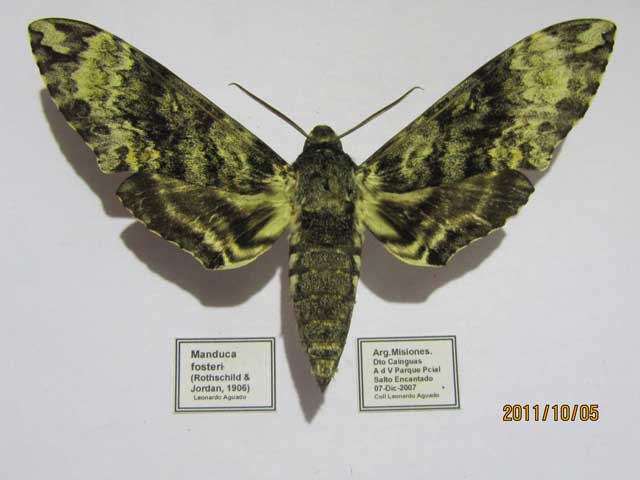Manduca fosteri
MAN-doo-ka FOS-te-rye
(Rothschild & Jordan, 1906) Protoparce

Manduca fosteri, Dto Cainguas, A d V Parque Pcial Salto Encantado, Misiones, Argentina,
December 7, 2007, courtesy of Leonardo Aguado.
This site has been created by Bill Oehlke.
Comments, suggestions and/or additional information are welcomed by Bill.
TAXONOMY:
Family: Sphingidae, Latreille, 1802 |
